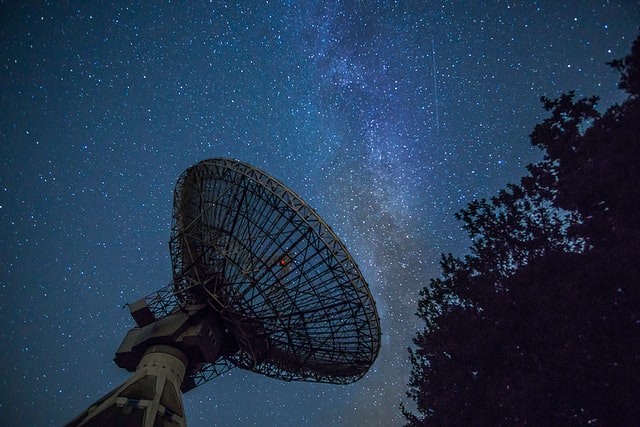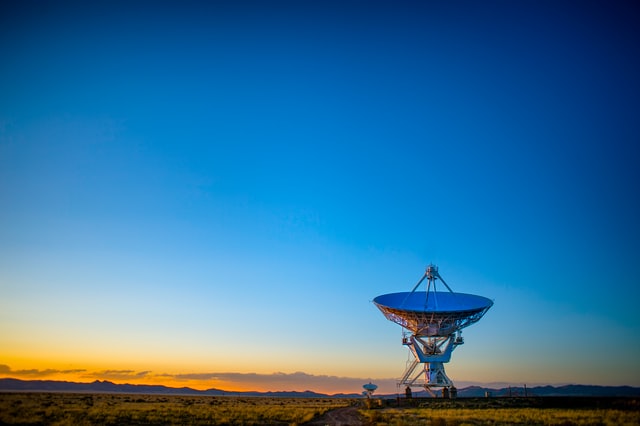Extraterrestrial Life: No Human-like Aliens (Yet), But Alien Microbes, Yes
Is there life in other planets? One way to find out is through space exploration. That has been done several times. What have we found out all these decades?
Author:Hajra ShannonReviewer:Paula M. GrahamDec 28, 20211K Shares357.6K Views

Talks, both formal and informal, about aliens, UFOs, flying saucers, and extraterrestrial life have thrived for decades. The fascination over the possibility of some advanced civilizations in far-away galaxies (think, for example, of Naboo and Tatooine of the “Star Wars” fame) has never ceased.
Alien hunters, ufologists, astrobiologists – people who study the prospect of extraterrestrial presence on other planets – and other scientists not only talk about such topics. They actually spend their lifetime studying them and looking for evidence of their existence.
Will the search for extraterrestrial life lead to nothing? Or, will it direct mankind to something that can change the course of history forever?

Aliens Are Real, Says Harvard Astronomer
Extraterrestrial Life
Merriam-Webster defines “extraterrestrial” as “originating, existing, or occurring outside the earth.”
This life could either be extraterrestrial intelligent life or extraterrestrial microbial life.
Primarily due to lack of physical evidence up to this day, it’s safe to say that scientists speculate about extraterrestrial intelligent life, aka, intelligent life. This could be intelligent beings – the aliens or extraterrestrials – that may or may not have certain physical resemblance to humans.
As for other alien forms of life – bacteria, for example – scientists refer to them as extraterrestrial organisms, extraterrestrial microbial life, or extraterrestrial microbes.
For alien microbes, scientists already found some or at least former traces of them outside of Earth.
In February 2018, New Scientist reported about the discovery, through the Cassini–Huygens research mission to Saturn (1997-2017), of methane-producing microbes on Enceladus, one of Saturn’s 82 moons.
The World Economic Forum reported in September 2020 that through the James Clerk Maxwell Telescope – the world’s largest astronomical telescope and located in Hawaii – scientists discovered phosphine in the clouds of Venus. Bacteria produce this gas. Its discovery established the likelihood of microbes being present in Venus.
The Mars Analogues for Space Exploration project (MASE; 2014-2017) brought back to Earth over 1,000 microbes called extremophiles, according to a July 2021 Scientific American article. These species possess the fantastic ability to survive and thrive in ultra-harsh environments.
The public may generally perceive the search for extraterrestrial life as the search for those human-like aliens, which Hollywood sci-fi movies and TV series have presented in various ways over the years.
Scientists search for alien microbes, too.
Which Planet Has A Life?
As of this writing, the 4.5-billion-year-old Earth still remains to be the only planet with life in the 13.8-billion-year-old universe.
Through chemical evidence, scientists estimated that life on Earth started approximately “4 billion years ago,” according to the Public Broadcasting Service.
The Exoplanet Exploration Program of the National Aeronautics and Space Administration (NASA) intends to look for “powerful indication of possible life” in exoplanets.
An extrasolar planet or exoplanet, according to Wikipedia, “is a planet outside the Solar System.”
Astronomer and planetary scientist Sara Seager, part of NASA’s exoplanet program, and some biochemists will look for “possible chemical combinations” of the following elements:
(a) carbon
(b) hydrogen
(c) nitrogen
(d) oxygen
(e) phosphorous
(f) sulfur
These six elements are all present on Earth, indicating the existence of life on this planet. Proof of any combination of the aforementioned chemicals in an exoplanet “could signal the presence of alien life,” according to NASA.
Extraterrestrial Life Debate
New York-based astrophysicist Paul M. Sutter, in his November 2021 article for Space.com, talked about mankind’s relentless pursuit of extraterrestrial life.
Sutter said that even with the kind of technology we have right now, its capabilities to explore the universe is limited. However, man’s unrestrained curiosity fuels the desire to keep on searching and observing. So, whenever one side of the population asks about extraterrestrial life, the other side tries to provide an answer.
That perhaps could be the simplest explanation behind the relationship between the so-called Fermi Paradox and Drake Equation. The former raised a question and the latter took the challenge to search for an answer – all in the name of science.
The Fermi Paradox
To cut an already short – and very old story – Enrico Fermi (1901-1954), an Italian physicist and recipient of the 1938 Nobel Prize in Physics, asked, “Where is everybody?”
The “everybody” he’s referring to were extraterrestrial beings.
It was 1950 and Fermi was chatting with some colleagues over lunch somewhere in New Mexico, according to Wikipedia. Flying saucers popped up in the conversation, and it was when the group shifted to other topics that Fermi asked that question.
It has since become known as the Fermi Paradox.
If there is really intelligent extraterrestrial life out there, where are they?
The Drake Equation
American radio astronomer and astrophysicist Frank Drake – he turned 91 this year – devised a formula to serve as a guide in the search for extraterrestrial life, according to the SETI institute.
Drake presented this formula in November 1961 during a meeting at the Green Bank Observatory (that time called National Radio Astronomy Observatory) in Green Bank, West Virginia.
The National Academy of Sciences (est. 1863) in Washington, D.C., organized the meeting, where it invited Drake, planetary astronomer Carl Sagan (1934-1996), and eight more scientists.
The formula has since been named as the Drake Equation.
And that meeting led to the establishment of the non-profit Search for Extraterrestrial Intelligence (SETI) Institute in 1984 in California. The name says it all.
Drake became one of the first Trustees of the SETI Institute and Director of the Carl Sagan Center for the Study of Life in the Universe.
For sixty years, astrobiologists and other scientists have held on to the Drake Equation and are more likely to continue referring to it in the years to come.
Sutter admitted that “we have no idea how common” extraterrestrial life – both intelligent life and non-intelligent life – is. Still, he asserted that any indication of such life outside our planet will be newsworthy.
The Search Continues Using Ultra Powerful Telescopes
NASA used the Kepler Space Telescope from March 2009 until October 2018 to discover planets, according to Wikipedia. The National Public Radio reported that it cost roughly $600 million.
NASA launched Hubble’s successor – the more powerful James Webb Space Telescope – on December 25, 2021. By 2016, its cost already skyrocketed to approximately $10 billion, according to Wikipedia.
The Hubble Space Telescope was launched in April 1990. April 2020 marked its 30th year of operation, and though NASA already made its successor, the Hubble will be used “until 2030-2040.”
The Hubble was the first of its kind in the world and, by the time of its launch, cost $1.5 billion, according to Space.com.
In May 2027, NASA will launch the Nancy Grace Roman Space Telescope, with an estimated initial “development cost” of $3.2 billion.
All these space telescopes, except for one, were named after astronomers Johannes Kepler (1571-1630), Edwin Hubble (1889-1953), and Nancy Grace Roman (1925-2018).
James E. Webb (1906-1992) served as Undersecretary of State (1949-1952) during the Truman Administration. Years later, President John F. Kennedy appointed him NASA Administrator (1961-1968).
According to NASA’s Exoplanet Exploration Program, the James Webb Space Telescope and the Nancy Grace Roman Space Telescope shall aid the agency on its search for “potentially habitable worlds.”
NBC reported in November 2021 that by 2025, scientists will embark on a project called the TOLIMAN mission, which aims to search for extraterrestrial life in the Alpha Centauri system.
In this project, scientists will be using the TOLIMAN (Telescope for Orbit Locus Interferometric Monitoring of our Astronomical Neighborhood) space telescope.
Breakthrough Initiatives, founded in 2015 by billionaire physicist and entrepreneur Yuri Milner for space science programs, finances the TOLIMAN mission.
And If Aliens Finally Show Up, What Now?
A study published in 2018 by Frontiers in Psychology took a different angle when it comes to extraterrestrial life.
The paper enumerated some of the probable scenarios and reactions from the general public once science succeeded in proving the existence of alien life.
In this 2018 study, the result revealed that people “will take it rather well” once they learn that aliens – both human-like aliens and alien microbes – indeed exist.
Based on some previous formal discussions and studies, that’s quite opposite of the probable reactions by the general public, according to the study.
The Robertson Panel said that there could be “mass hysteria.” This panel was composed of people from the scientific community, who convened in 1953 as reports of alleged UFO sightings spread in the early ‘50s in the U.S., according to Wikipedia.
A 2011 study published by The Royal Society revealed that people will panic.
Hollywood filmssuch as “Independence Day” (1996), “War of the Worlds” (2005), and “Edge of Tomorrow” (2014) depicted aliens as enemies, killing humans and destroying Earth.
Nonetheless, the 2018 study said that people “will react positively” to extraterrestrial life.
Conclusion
Scientists associate advanced technology such as in the form of spacecraft capable of light-speed travel with extraterrestrial life and alien civilizations.
An undated astronomy lecture by the Ohio State University stated that one criterion to qualify as an intelligent species is the capacity to develop advanced technology. Two indications of advanced technology, according to the lecture, is when intelligent species “send out radio signals and build interstellar spacecraft.”
Radio telescopes operate in Australia, China, Japan, Russia, South Africa, and across Europe. In America, scattered in several states are more than a dozen radio astronomy observatories. The Very Large Array in New Mexico alone boasts of 27 radio telescopes.
How come all this time not a single radio signal outside of Earth has ever been received? How come no out-of-this-world spacecraft has ever been seen hovering the skies in broad daylight, where anyone with a smartphone can easily photograph and record?
When it comes to extraterrestrial life, some people may simply echo what Enrico Fermi uttered more than 70 years ago. As for scientists, as NASA put it, people can also depend on “how lucky we get” to discover alien life.

Hajra Shannon
Author

Paula M. Graham
Reviewer
Latest Articles
Popular Articles




